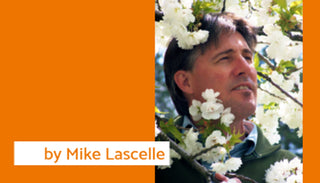I have been selling native plants for well over 25 years now, and I’ve noticed a new trend in regard to the clientele who are seeking them out. Indigenous people or those with some native background, are looking for very specific local species and when they find them, there is a very palpable sense of joy, like they have encountered a long-lost friend. I have never seen anything quite like it, but then again if a plant can bring you a sense of community, of belonging, or healing (both spiritual and physical), then that little green leafy shrub or tree becomes a powerful symbol of hope.
I taught myself about native plants when I worked for BC Forest back in the late 1970s. Later, through my horticultural years as an estate gardener, landscape foreman, or garden designer I would always take the time to wander into local forests to survey the local ecosystems. Along with my trusted guide, Plants of Coastal British Columbia, I discovered the pain of Devil’s Club (Oplopanax horridus), the rare beauty of Fairyslipper (Calypso bulbosa), as well as the ancient majesty of centuries-old Yellow Cedars (Chamaecyparis nootkatensis, now renamed Callitropsis). I would eventually become a registered native garden designer with Naturescape BC but despite all that, I have never felt a "oneness" with the plants that I am currently seeing others experience.
(📸 L: Gillfoto - Wikipedia)
Of course, long before "Western" explorers discovered them, our indigenous plants had names and specific uses for food, shelter, medicine, and ceremonies. Peoples such as the Katzie, Kwantlen, and Sto:lo first nations (among others) had been using them on a daily basis for centuries and yet, most of these plants carry the name of the botanist who simply brought them to the attention of the rest of the world. People like David Douglas (Douglas Fir, Phlox douglasii, Limnanthes douglasii), Thomas Nuttall (Cornus nuttallii, Delphinium nuttallii), John Scouler (Campanula scouleri, Corydalis scouleri), Archibald Menzies (Pseudotsuga menziesii, Arbutus menziesii), Joseph Hooker (Disporum hookeri, now Prosartes) and Meriwether Lewis (Philadelphus lewisii, Mimulus lewisii) of the famous Lewis and Clarke Expedition of 1804-06. The irony is that while these plant collectors are immortalized in the Linnaean taxonomy system, the original indigenous plant names are rarely heard.
And yet many of these explorers would not have survived or discovered the importance of these native plants without the help of first peoples. A few examples include John Scouler who only learned which plants were edible by watching Indigenous women harvest both Camas Lily (Camassia) and Wapato (Sagittaria latifolia), with the latter being cultivated along our local Pitt River for centuries. Mr. Scouler returned the favour by stealing bones and sacred artifacts from burial canoes at the Mount Coffin tribal cemetery for "research." Similarly, the Lewis and Clark Expedition would have likely perished without the intervention of two Indigenous women, Sacagawea, who acted as both a guide and interpreter, as well as Watkuweis, a member of the Nez Perce who convinced her people not to kill the starving party but to provide them with food and safe passage. Unfortunately, the Lewis and Clark expedition laid the groundwork for the displacement of Indigenous peoples from their traditional territories in the United States to less desirable and often, inhospitable reserves.
(📸 R: Bouba - Wikipedia)
Despite this deplorable history of treatment, we still have these indigenous plants growing around us that have the potential to provide many amenities, including tea (Ledum groenlandicum), cancer medication (Taxus brevifolia), wood for musical instruments (Acer macrophyllum), spice (berries of Juniperus communis), tobacco substitute (Arctostaphylos uva-ursi), basket weaving material (Picea sitchensis), wood polishing (Equisetum hyemale), Stinging Nettle cure (Rumex crispus), delicious jelly (Rubus spectabilis), yellow dye (Mahonia aquifolium), laxative (Rhamnus purshiana), fish hooks (Crataegus douglasii) and wound dressings (Goodyera oblongifolia). This is just the tip of the iceberg of botanical uses as much of the knowledge of first nations plant use was lost in the practice of government-sponsored assimilation, which discouraged their culture.
Getting back to the whole purpose of this article, that being a concise definition of indigenous plants, they're so much more than their geographical location or the botanist who popularised them. An indigenous plant is one that houses, heals, and nourishes, but more importantly, it is a species that belongs to Indigenous people, simply because they used it first.


